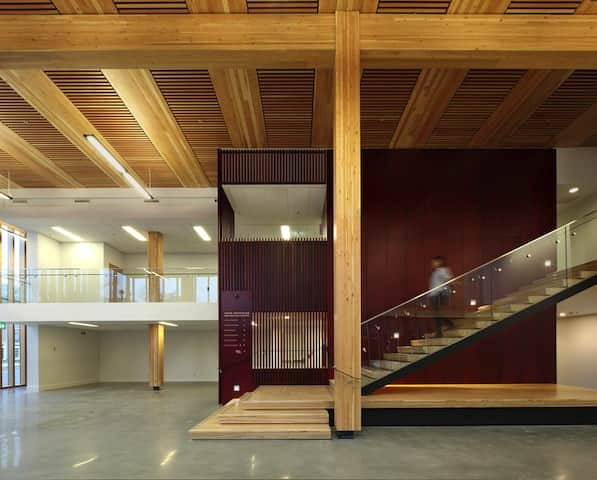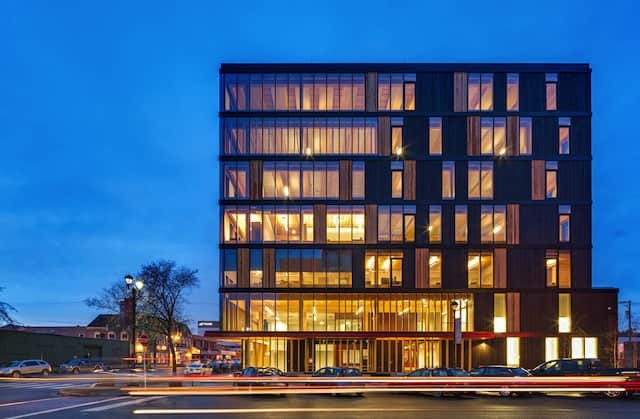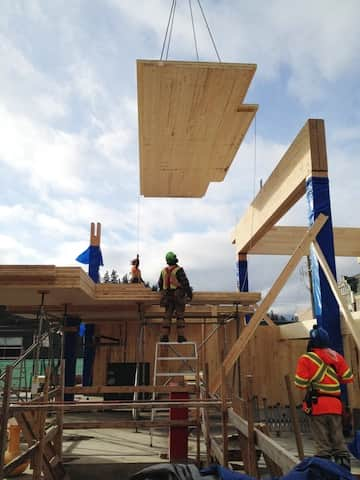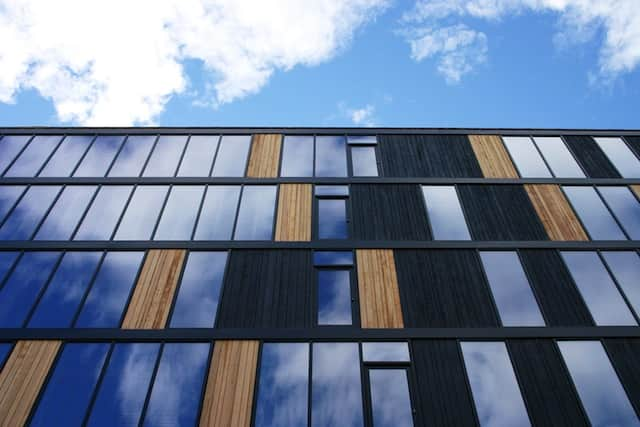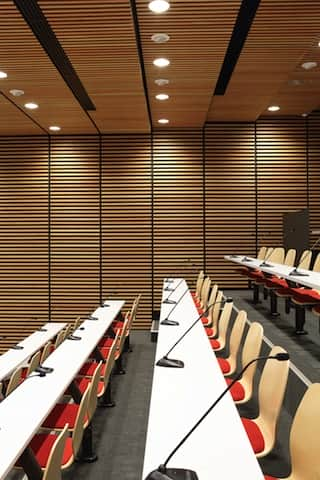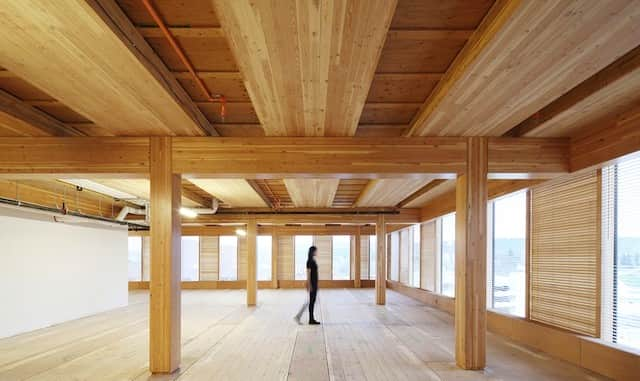
The Wood Innovation Design Centre has won the Royal Architectural Institute of Canada (RAIC) Innovation in Architecture award for 2015.
The Wood Innovation Design Centre in Prince George is a centre of excellence at the University of Northern British Columbia. It aims to show that tall timber buildings can be economical and safe, and celebrates wood as a beautiful and sustainable material. The architect is Michael Green, FRAIC, of MGA | Michael Green Architecture in Vancouver.
This Innovation in Architecture award recognizes exceptional architectural innovation. Potential areas for innovation include research and development, applied use of new technology and adaptation of existing technology. Innovation can also be demonstrated by new project delivery and construction methods, advanced design processes and fresh approaches to details and materials.
The jury members were architects Omar Gandhi, MRAIC, of Halifax, Donald Chong, RAIC, of Toronto, and Jean-Pierre LeTourneux, FIRAC, of Montreal.
“Michael has traveled the world to champion new methods of construction associated with wood and by doing so, has he raised the awareness of innovative approaches to construction while raising the profile of Canadian architecture,” said Mr. Oboh.
“Significant architectural implications result from creating an ideal form using a singular fold in a steel plate,” he added.
As the first tall wood building in Canada built beyond current building codes, WIDC is a demonstration project for the future of building in wood.
The eight-storey building (six storeys plus mezzanine and penthouse) stands 29.5 metres tall, making it North America’s tallest contemporary timber building.
To prove that all life safety requirements could be met, the project team conducted extensive mock-ups, testing, and detailed studies.
MGA sought to demonstrate economical, repeatable technologies for building high-rise structures with timber, hoping to inspire institutions, private sector developers, and other architects and engineers to embrace this way of building.
The firm argues that building with wood sourced from sustainably managed forests offers designers a rapidly renewable, low energy, and carbon-sequestering alternative to conventional building materials. Greater use of timber for large structures would significantly reduce greenhouse gas emissions worldwide.

